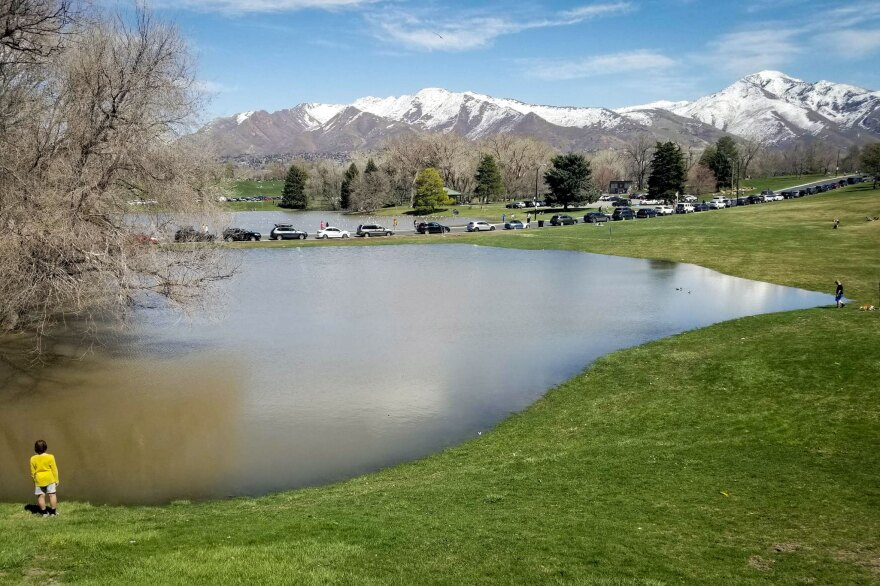For Millcreek high schooler Elise Daigle, the water in nearby Tanner Park has been higher than she’s ever seen it.
“The rivers down there are pretty full, fuller than normal,” she said. “It’s a little scary for what June is going to be like when all the snow from up in the mountains comes down.”
Spring snow melt has caused many of Utah’s public parks and ponds to fill up, and in some cases, overflow. Gov. Spencer Cox declared a state of emergency on April 18 due to flooding.
“We’ve got to take action to protect our state from the avalanches, landslides, mudslides, rockslides and floods that will inevitably occur in the coming months,” he said.
The state of emergency will be in place for 30 days but could be extended by the Legislature.
Even though the high water might be alarming, cities across the state have a secret weapon to fight flooding — public ponds. Many ponds found in public parks are designed not just as places to recreate, but specifically to store water and keep flooding at bay.
“The ones that have been in our system for a long time were designed for flood control purposes first and a community amenity, a park, secondarily,” said Patrick Leary, Salt Lake County’s associate director of parks, trails and open space.
Leary said there are four major water retention areas in the Salt Lake Valley: Sugar House Park in Salt Lake City, Creekside Park in Holladay, the Wheeler Historic Farm in Murray and areas along where Mill Creek winds its way toward the Jordan River.
Those areas might not be thought of as retention ponds. In the case of Creekside Park, that’s also where picnic pavilions, playgrounds and a popular disc golf course are located.
But these water features often play a critical role in managing flows throughout the entire stream system.
“These parks are right out in the open and are well loved year-round,” said Leary. “They were designed to detain water, to slow the runoff down, pond up, and then let flood control engineers slowly release water downstream.”
Still, high water can be alarming for many who see it — homeowners and renters alike.
“You don’t want to see more water and have your house flooded,” Daigle said.
Even so, flooded ponds are actually the system doing what it’s designed to do. Salt Lake City’s Sugar House Park will be closed to vehicle traffic after April 22 for flood control efforts and standing water.
“It’s absolutely working the way it should,” said Leary. “In fact, that’s why it was designed that way. If you were to look at Sugar House Park from an aerial photo, you’ll notice that it’s built as a bowl. It was designed to catch water and retain and detain it for a period of time.”
Even with the system working well, Leary said there’s always the chance of danger during runoff season.
“So people still need to be cautious around high water, even if the system is running as it should. The water will be high, cold and fast.”
The governor said flood conditions could persist for months in some parts of the state.
Source: kuer















